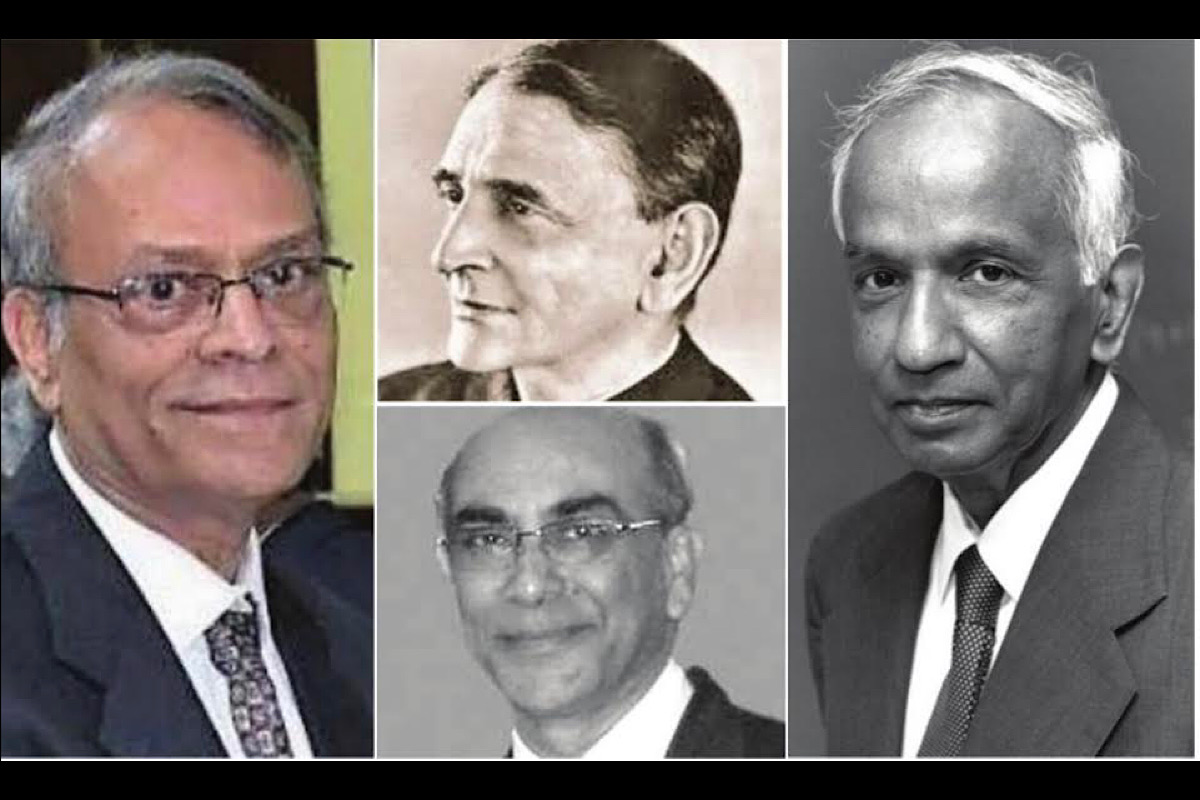Wrong judgements and comments by established scientists often affect the course of scientific pursuits besides demoralising young aspirants.
We are aware how certain disparaging remarks by the celebrated astronomer Arthur Eddington on an important work of the young Subramanyan Chandrasekhar discouraged the latter and caused a setback to developments in that field.
Years later Chandrasekhar’s work turned out to be correct. At another level, a remark by the noted physicist Debendra Mohan (D.M.) Bose altered the fate of young Shayamadas (S.D.) Chatterjee. Based on his own experiment, Chatterjee suggested that ‘possibly Urnaium was decaying by “spontaneous fission” ‘ and calculated the half-life of Uranium (U-238) as 1016 years (as against the theoretical estimate by Neils Bohr and John Wheeler of 1022 years).
When conveyed through a paper for publication in the journal Science and Culture, D M Bose rejected it and made a caustic remark that ‘spontaneous fission’ was happening in Chatterjee’s head! As Bikash C Sinha writes in his introduction to the book (S D Chatterjee ~ A Scientist’s Journey from Tradition to Modernity by Rajinder Singh and Suprakash C. Roy, Shaker Verlag, Düren, 2022, xvi + 178 pages), Chatterjee had to withdraw the paper and was shattered, but repeated the experiments at his home, building an identical set-up, and confirmed the same results.
Unfortunately for him, within two months of his withdrawal of the paper, in 1940, two Russian physicists, working independently, came up with the same results. ‘Once again, India lost out on credit for a major scientific discovery because of a casual remark.’ While we all celebrate the works of Indian scientists like J C Bose, C V Raman, S N Bose, Meghnad Saha and Homi Bhabha, we know very little of others who might not have acquired stellar reputation, but have contributed substantially, against all adversities, to the cause of science. Such scientists worked quietly, in Calcutta, Madras, Bangalore and elsewhere.
Their work also deserves to be systematically recorded, assessed and contextualised. In recent years, Dr Rajinder Singh, often in collaboration with Dr Suprakash C Roy, has been engaged in this pursuit, bringing out books on the likes of D M Bose, S K Mitra, B B Roy, S C Sirkar, K Banerjee, N R Sen, Bibha Chowdhuri, Purnima Sinha, Snehamoy Datta and Bal Mokand Anand. Rajinder Singh and Sujata Rao have also authored a book titled Suprakash C. Roy: A Multidimensional Physicist ~ A Story of Courage and Determination (Shaker Verlag, Düren, 2021, xvi + 191 pages).
This is a welcome trend that should be encouraged. S D Chatterjee (1909-1995) is known in Bengal for his study of Helium and Radon in the hot springs of Bakreswar, but his discovery of spontaneous fission (for which two Russian scientists are credited), separation of Cobalt-60 isotope and work on radiocarbon dating, among others, deserve wide appreciation. Some of these were done for the first time in India.
Following the examples of J C Bose and other pioneers, this versatile experimental physicist often designed and built the instruments and equipment items needed for his research. This is how savants pursued science in those days. As the first doctorate (D.Sc.) in nuclear physics from the University of Calcutta (1946), Chatterjee later headed the Physics department in the newly established Jadavpur University (1956).
After retirement, he joined the Indian Association for the Cultivation of Science in 1970. At the behest of S N Bose, Chatterjee devoted himself fully to the work of Helium extraction from Bakreswar Thermal Spring (the work is now being followed up by the Department of Atomic Energy).
It is through the untiring efforts of unsung warriors like Chatterjee, against various kinds of obstacles, that India is ranked high in the field of atomic energy and related areas. It may be observed that many of his scientific papers were published in the indigenous journal Science and Culture. The struggles and achievements of Suprakash C Roy (1944) followed a differnt trajectory. He retired as a Professor and Chairman of the Physics department at Bose Institute, Kolkata.
But his contribution cannot be measured just by the post he had held. “The technology that he developed for building superheated drop detectors for measurement of radiation dose has been transferred to Indira Gandhi Centre for Atomic Research (IGCAR), Kalpakkam and Defence Research Laboratory, Jodhpur.”
His scientific research apart, he would be remembered as an inspiring teacher and guide, and perhaps more, as a long time editor-in-chief of the journal Science and Culture. Post-retirement, with his mission of popularising science and encouraging young people to discover the joys of science, he devoted all his time to nurturing this journal.
Established with the efforts of Prof. Meghnad Saha, Acharya P C Roy and others in 1935, and ably edited by Saha and his successors in the initial years, this journal fell into bad times till Roy sought to revive its glory.
His ability and credibility, personal interest and long association with the Indian Science News Association, helped him infuse life into this journal. Besides introducing some reformatory measures, as detailed in the book, he contributed the maximum number of editorial essays, research articles and book reviews in order to enhance the quality of this publication.
The books, while highlighting the defining moments in the life and career of two physicists, also analyse objectively the quality of their research outputs.
The slim volumes, therefore, would be valuable to students of science as also to any educated person interested in the history of science, especially in India. Shyamadas Chatterjee, Suprakash Roy, and others like them served the society with zeal and commitment, attracted by the lure of science and motivated by the prospect of using it for public good.
Unfortunately, neither of them was decorated with any national award by the government
(The writer is a retired IAS officer)











